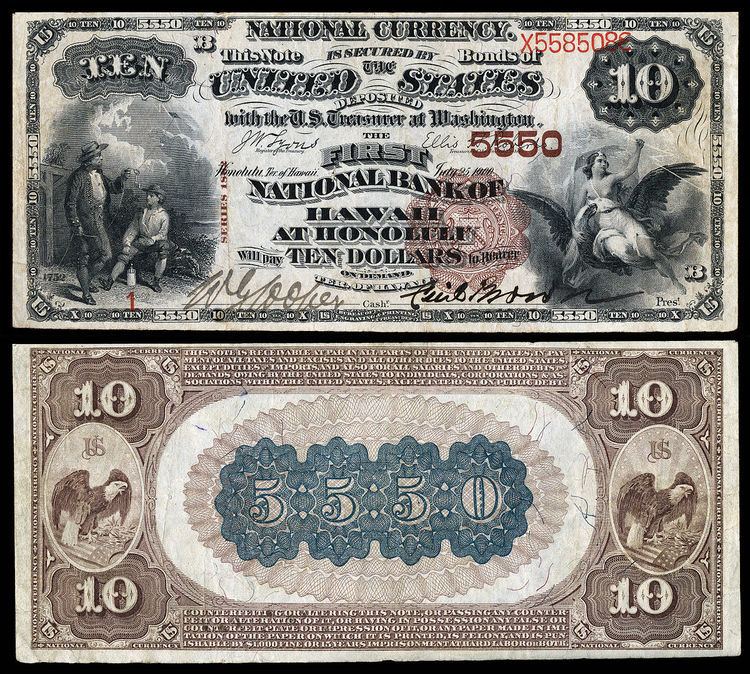 | ||
National Bank Notes were United States currency banknotes issued by National banks chartered by the United States Government. The notes were usually backed by United States bonds the bank deposited with the United States Treasury. In addition, banks were required to maintain a redemption fund amounting to five percent of any outstanding note balance, in gold or "lawful money".
Contents
Background
Prior to the American Civil War, state banks issued their own banknotes and chartered private banks to issue banknotes as well. Privately issued banknotes were nominally backed by specie or financial securities held by the banks but oversight of issuing banks often was lax and encouraged wildcat banking, in which fraudulent institutions issued worthless banknotes. During the Civil War, in 1863, the National Banking Act established a system of National Banks which were empowered to issue National Bank Notes subject to federal oversight. The chartering of banks and administrative control over the issuance of National Bank Notes were the responsibility of the Office of the Comptroller of the Currency. A 2 percent tax on state bank notes was authorized in 1864 to speed conversion to the new system, only to be increased the next year to 10 percent, then 20 percent.
The program
From 1863 to 1935, National Bank Notes were issued by banks throughout the country and in US territories. Banks with a federal charter would deposit bonds in the US Treasury. The banks then could issue banknotes worth up to 90 percent of the value of the bonds. The federal government would back the value of the notes—the issuance of which created a demand for the government bonds needed to back them.
The program was a form of monetization of the Federal debt. Bonds eligible as collateral for posting to the Treasury were said to have the "circulation privilege" and the interest they bore provided seigniorage to the National Banks.
End of the program
National Bank Notes were retired as a currency type by the U.S. government in the 1930s during the great depression as currency in the U.S. was consolidated into Federal Reserve Notes, United States Notes, and silver certificates; privately issued banknotes were eliminated. The passage of the Gold Reserve Act created an accounting gain for the Treasury, part of which was used to provide funds to retire all bonds against which National Banks Notes could be issued.
Sometimes these notes are called "hometown" notes, with their popularity deriving from the wide range of towns and cities that issued them. Among paper money hobbyists, especially in the U.S., these notes are avidly studied and collected. Some were issued in large numbers and remain inexpensive to collectors today. Others associated with rare banks, towns, states and combinations thereof and are quite valuable. A note from Walla Walla, in what was then Washington Territory, sold for $161,000 in a June 2010 sale at Heritage Auctions.
